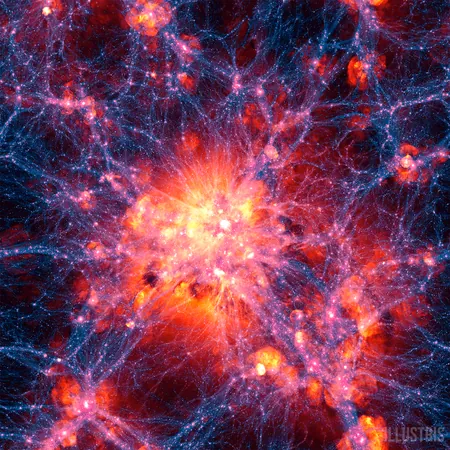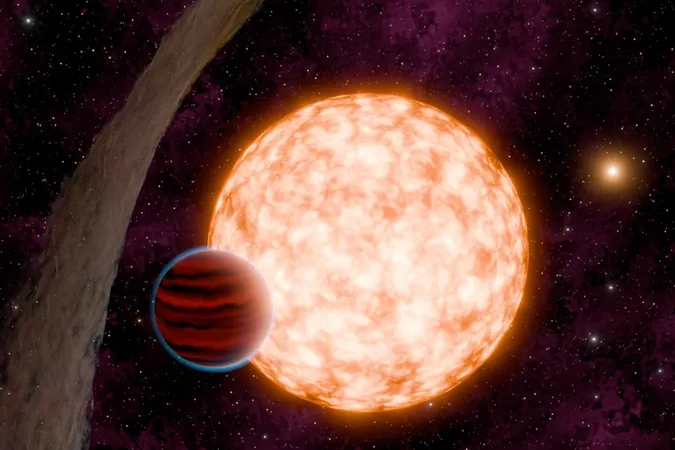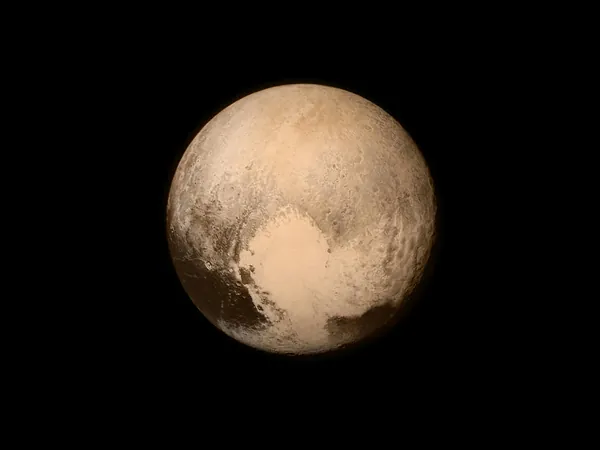
Astronomers Close In on the Universe's 'Missing Matter'; Groundbreaking Study Reveals Hidden Cosmic Secrets!
2024-11-19
Author: Emily
Introduction
Astronomers have taken a significant step toward solving one of the universe's enduring mysteries: the elusive missing matter that has puzzled scientists for over two decades. The quest for this cosmic enigma, often referred to as the "missing baryons problem," has recently yielded promising results thanks to groundbreaking work in astrophysics.
Background
For context, during the 1990s and early 2000s, researchers utilized data from the cosmic microwave background radiation and models of the Big Bang to determine that ordinary matter, comprised of particles like protons and neutrons (collectively termed baryons), makes up about 4 to 5 percent of the universe's energy density. Yet, to their surprise, only about half of that baryonic matter has been accounted for. This leaves a substantial fraction—potentially billions of stars' worth of matter—still unaccounted for.
Recent Study
The recent study, published in Astronomy & Astrophysics, showcases the most detailed observation of the warm-hot intergalactic medium (WHIM)—a theoretical repository where these missing baryons might reside. Researchers employed X-ray data from the extended ROentgen Survey with an Imaging Telescope Array (eROSITA) to analyze gas across nearly 8,000 filaments, some stretching up to 65 million light-years. This study represents a monumental leap in the understanding of the intricate structure of the universe.
Characteristics of WHIM
The WHIM is characterized by temperatures soaring around 10 million degrees Fahrenheit (5.6 million degrees Celsius), causing the gas to consist of charged particles rather than neutral atoms. These properties significantly influence how the gas interacts with light, presenting astronomers with unique challenges in their quest for accurate measurements.
Findings
By calculating both the temperature and density of the gas in the WHIM, the research team posits that approximately 20 percent of the universe's missing baryons may be found here, although the figures remain somewhat uncertain. The study underscores the need for further investigations using multi-wavelength surveys aimed at refining these estimates.
Expert Opinions
"This represents a pivotal question in astrophysics, akin to exploring dark energy and dark matter," remarked Esra Bulbul, a co-author and astrophysicist at the Max Planck Institute for Extraterrestrial Physics. "The search for these baryons has been ongoing, making the discovery of a significant portion of them incredibly exciting."
Next Steps
Despite the breakthroughs, the investigation remains open. Experts like Michael Shull from the University of Colorado emphasize the importance of refining measurements of various parameters, including temperature and elemental abundance. Such precision is crucial for ensuring a clearer understanding of the WHIM and its role as a repository for missing baryons.
Future Research
Future observational strategies will involve employing different wavelengths of light to capture a holistic view of the WHIM, likely yielding improved data about its temperature, density, and subsequently, the total baryonic content.
Implications for Galaxy Formation
As studies continue to unfold, understanding the dynamics of the missing baryons could also shed light on galaxy formation and evolution. Xiaoyuan Zhang, a postdoctoral researcher at the Max Planck Institute, noted, "The surrounding space of galaxies is not a perfect vacuum; the presence of gas influences key characteristics such as color, shape, and star formation rates."
Conclusion
In conclusion, as advancements in technology and methodology persist, the scientific community is optimistic that the remaining missing baryons will eventually be identified. Unraveling this cosmic mystery may not only enhance our grasp of the universe but may also transform our understanding of its continuous evolution—case closed? Stay tuned!









 Brasil (PT)
Brasil (PT)
 Canada (EN)
Canada (EN)
 Chile (ES)
Chile (ES)
 España (ES)
España (ES)
 France (FR)
France (FR)
 Hong Kong (EN)
Hong Kong (EN)
 Italia (IT)
Italia (IT)
 日本 (JA)
日本 (JA)
 Magyarország (HU)
Magyarország (HU)
 Norge (NO)
Norge (NO)
 Polska (PL)
Polska (PL)
 Schweiz (DE)
Schweiz (DE)
 Singapore (EN)
Singapore (EN)
 Sverige (SV)
Sverige (SV)
 Suomi (FI)
Suomi (FI)
 Türkiye (TR)
Türkiye (TR)